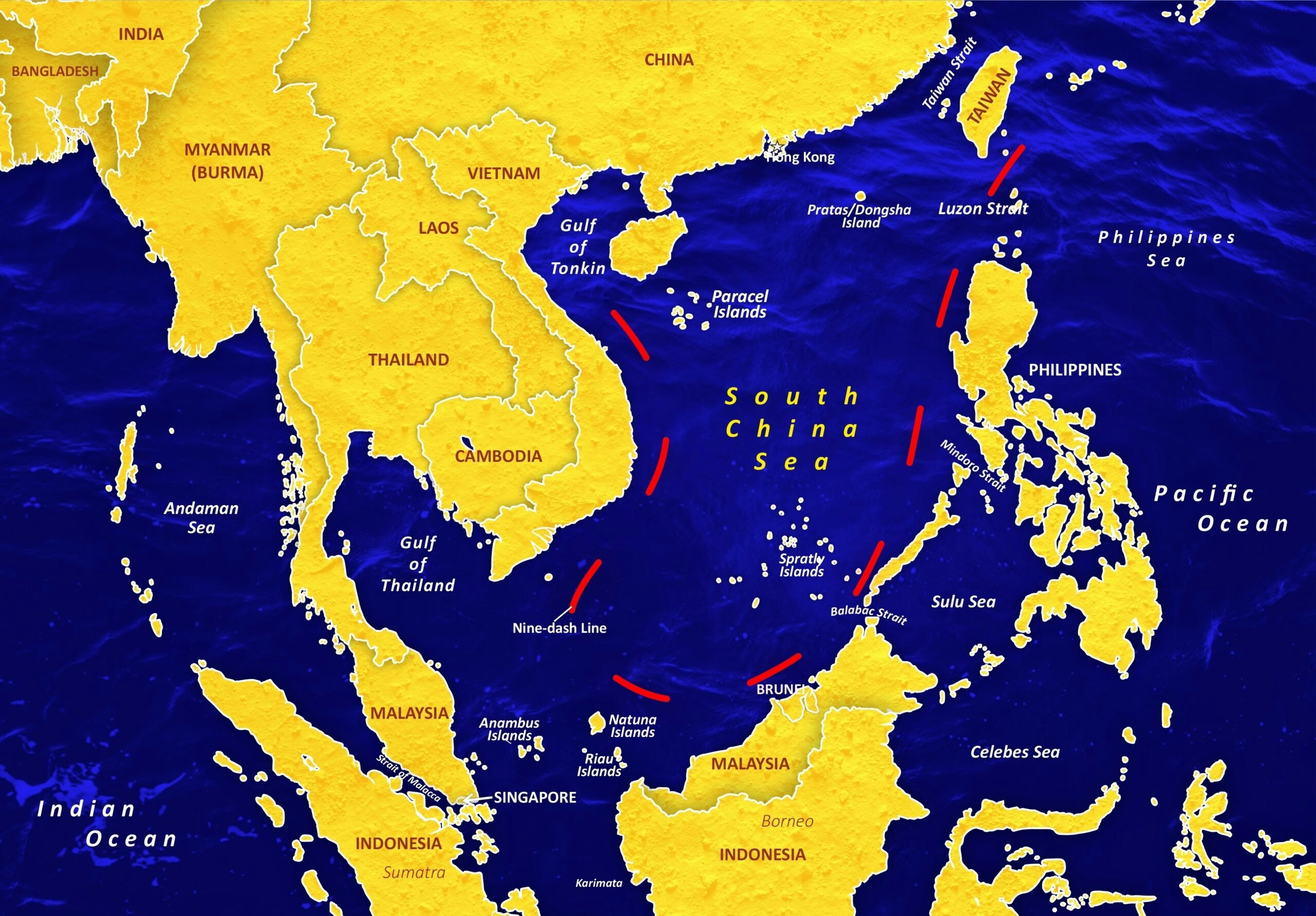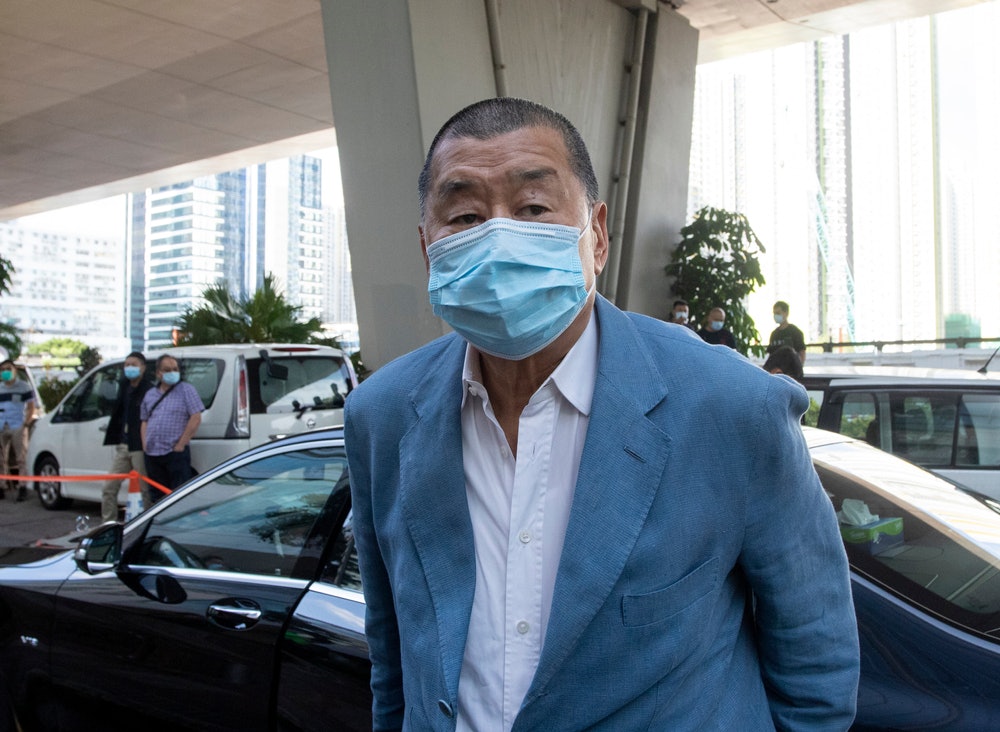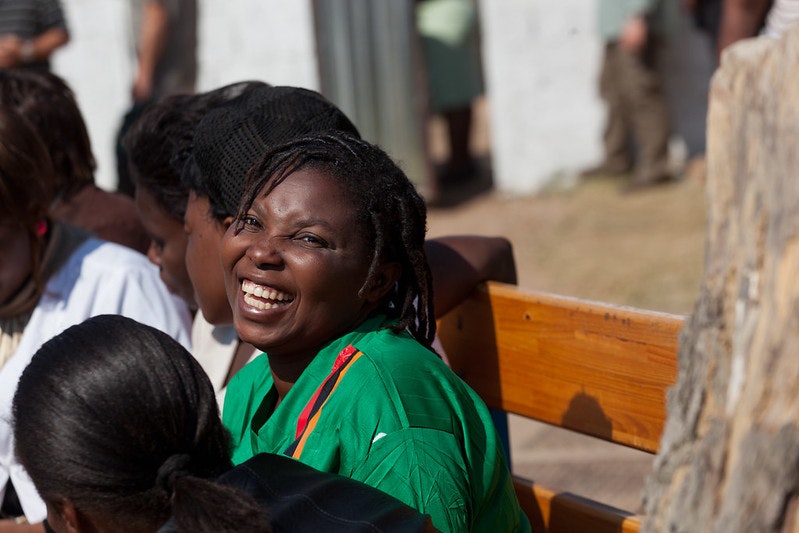Explained in this paper:
- Strict, objective criteria to select recipients of assistance
- Country ownership in designing and implementing aid projects
- Accountability through transparency and a focus on achieving quantifiable results against defined targets
- Data-driven decision-making
While most Americans agree that it’s important for the United States to engage in the world, they want us to use fewer resources while maintaining our levels of involvement. Two programs created by President George W. Bush serve as valuable models for foreign assistance that’s transparent, effective, and results oriented: the Millennium Challenge Corporation (MCC) and the President’s Emergency Plan for AIDS Relief (PEPFAR).
MCC, established in 2004, was deliberately designed to operate very differently from other U.S. foreign aid agencies. Its mission is tightly focused on reducing poverty through market-oriented economic growth in a limited number of countries. Its annual budget is around $900 million per year, and its compacts are large, five-year grants that range from$110 million to nearly $700 million. Its model revolves around competitive selection, country ownership, and a focus on results against tangible milestones. MCC has invested over $15billion through more than 40 agreements in over 30 countries, 65% of them in Africa. These investments are expected to benefit about 215 million people.
PEPFAR, which began in 2003 as a way to combat AIDS in sub-Saharan Africa and the Caribbean, is the largest commitment by a nation to combat a single disease. It has invested almost $100 billion to date, both directly and through the Global Fund to Fight AIDS, Tuberculosis, and Malaria and other multilateral institutions. PEPFAR has saved more than 25 million lives over the last 20 years. It has enjoyed overwhelming bipartisan support across four successive administrations, within Congress, and among a diverse array of stakeholders, including civil society and the faith-based community. MCC and PEPFAR share characteristics that set them apart from the rest of U.S. foreign aid programs which are explained in this paper.
Assisting the less fortunate in other countries, while certainly a moral imperative for the United States, is also in our national interest. Countries that are economically and politically free tend to be more stable allies. Those that have open markets and transparent investment policies become trading partners and offer opportunities for U.S. businesses to create wealth and jobs. Nations that are able to provide their citizens dignified work and education, health care, and other social programs reduce the likelihood of extremism taking root. Conversely, countries overwhelmed by pandemic disease or a lack of economic opportunity can become unstable.
Our willingness to provide assistance in response to humanitarian and natural disasters not only demonstrates Americans’ innate compassion for others, but also helps diminish the possibility of mass migration. Further, if the United States doesn’t engage, our adversaries– like Russia and China – will attempt to fill the void, and their aims and interests don’t align with ours. Finally, our assistance engenders good will, which is often essential in this multilateral world where allies are critical to moving policy in the direction we prefer.
However, many myths surround U.S. foreign aid. Foreign assistance accounts for about1% of the U.S. Government’s annual expenditures, not the 25% of the Federal budget that opinion polls report many Americans believe. Instead of going directly to foreign governments, which many fear might waste or misappropriate aid, most of the funding– typically nearly 80% – goes to nongovernmental organizations, academic institutions, and multilateral organizations. And while some believe the United States carries a disproportionate weight globally when it comes to foreign aid, 26 high-income countries out of 40 tracked by the Organization for Economic Cooperation and Developmental locate a greater percentage of their gross national income to official development assistance than the United States.
Taxpayers have a right to demand that the funds that the United States devotes to foreign assistance be spent wisely and effectively, regardless of the amount. MCC and PEPFAR are two innovative models of foreign aid that do exactly that.
Strict, objective criteria to select recipients of assistance
Well-governed developing countries that support democratic rights and economic freedoms are more likely to effectively implement large amounts of assistance. To receive funding from MCC, low-and-lower-middle-income countries compete with each other based on a set of credible, third-party indicators that measure their performance in three categories: governing justly, investing in the health and education of their people, and fostering economic freedom.
MCC’s scorecards track 20 indicators from organizations such as the World Bank; the International Monetary Fund; the United Nations Educational, Scientific, and Cultural Organization; the World Health Organization; the Brookings Institution; and the Heritage Foundation. Countries must pass 10 of the 20 indicators, including at least one in each of the three categories. Countries must also pass one of the two Freedom House metrics on democratic rights – either Political Rights or Civil Liberties – as well as the World Bank/Brookings Institution indicator on Control of Corruption.
This competitive selection process prompts governments in candidate countries to pursue policy and legislative reform, improve governance, and sharpen the quality of their data.
The desire to “pass” the MCC scorecard and receive the program’s “seal of approval” has inspired country leaders to adopt policy reforms that they might not have otherwise – a phenomenon dubbed the “MCC Effect.”
An overwhelming 92% of foreign government officials and development experts indicated that MCC’s selection criteria impacted their country’s policy reform efforts, according to an independent survey published in 2013 by the Institute for the Theory and Practice of International Relations at the College of William & Mary. Since MCC’s scorecards are publicly available, other foreign aid agencies, private-sector investors, and even civil society can use them to assess a country’s policy environment and track its performance over time.
Many examples of the MCC effect exist. In Côte d’Ivoire, the government created a committee in 2011 dedicated to the goal of making the nation eligible for MCC assistance. While the country only passed five out of 20 scorecard indicators in U.S. fiscal year 2012,it had passed 10 by FY 2015 and 14 by FY 2019. In 2017, the Ivorian government signed a compact with MCC for nearly $525 million focused on rehabilitating roads, expanding access to secondary education and vocational training, and improving teacher training.
The government of Niger also formed an interministerial committee to address its shortfalls on the MCC scorecard. After instituting reforms, including ensuring that both men and women have the right to apply for passports and to pass citizenship to their children, the Nigeriens signed a compact with MCC in 2016.
Kosovo wasn’t initially included in many of MCC’s indicators because it didn’t become an independent nation until 2008. However, the government worked closely with MCC and entities such as the International Finance Corporation to expand the country’s data coverage. The number of indicators including Kosovo doubled to 14 by 2012 from seven .The country passed the MCC scorecard in 2016 after the government provided data to address the gaps created because MCC’s U.N.-sourced indicators didn’t cover nonmember states like Kosovo.
From the beginning, PEPFAR’s strategy has prioritized prevention, care, and treatment services in the geographic areas with the highest burden of HIV. PEPFAR has gone beyond global analysis, or even country-by-country comparisons, to examine progress in specific communities to ensure funding and services focus on need and equity.
In addition to rebalancing its portfolio across Africa based on the epidemiology of HIV, PEPFAR has taken deep geographic dives within each country to ensure its investments match both the risk and burden of disease and the demand for, and availability of, services. PEPFAR integrates information from site visits, geolocation and clinical data, reports from implementers, community surveys, and censuses in real time to pinpoint populations to target and gaps in coverage to fill. PEPFAR continuously deploys these data to deliver programming where the need is the greatest and to map the HIV epidemic and its trends, country by country, county by county, district by district.
Country ownership in designing and implementing aid projects
Aid is more effective if citizens in the recipient country are involved in setting priorities and are held accountable for results. If MCC selects a country for a compact, the host government takes the lead in designing and implementing development projects in cooperation with the private sector and civil society, with independent oversight to ensure funds are properly accounted for.
Initially, a government must appoint a Compact Development Team to work closely with MCC at every step of the process. This team conducts an analysis to identify the binding constraints to that economy’s growth and to the reduction of poverty and then develops solutions and actual projects to include in a compact. Throughout this process, the host government consults with civil society; academia; the private sector and business community; and other stakeholders. Once MCC awards a compact, the national government must create a local entity accountable for implementing the funding and overseeing its results.
MCC made its largest investment in urban water through a nearly $355 million compact with the government of Zambia in 2012 expected to benefit 1.2 million people over 20 years. Urban water includes drinking water as well as water used for things like toilets, showers, and car washes. It’s in contrast to water used for agriculture or efforts to support the environment. While most of the funding went to infrastructure development, about $26 million supported the institutional development of the two municipal public health, water, and sewage agencies in the capital of Lusaka. The government of Zambia contributed $50 million of its own resources and committed to completing any unfinished compact projects. While the compact ended in 2018, the Zambian government completed 96% of the infrastructure projects that remained unfinished by February 2020.
In Georgia, MCC signed a $140 million compact in 2013 that focused exclusively on strengthening the country’s education system to meet labor demands. In addition to designing the compact with stakeholder input and creating a local entity accountable for managing it, the government of Georgia also assigned certain implementation responsibilities, including utility connections, education assessments, and teacher training, to other public agencies as a means of securing sustainability over the long term. The Georgian government contributed nearly $33 million of its own resources to the compact, which concluded in 2019. The resulting improvements to the Georgian education system and workforce training are projected to benefit 1.2 million people over 20 years.
PEPFAR conducts regular quarterly and annual planning and programmatic reviews in each country. It brings community representatives and advocacy organizations to the table along with government officials to chart their country’s response to HIV together. Community engagement and empowerment is at the heart of PEPFAR’s business model: The perspectives of affected populations are taken into careful account as PEPFAR creates its initiatives, and local nongovernmental organizations now receive almost 70% of PEPFAR’s bilateral funding.
Accountability through transparency and a focus on achieving quantifiable results against defined targets
Before implementing a compact, MCC conducts a cost/benefit analysis and a beneficiary analysis to identify its economic rate of return (ERR) – the increase in real incomes attributable to a proposed MCC project compared with the costs. MCC sets a hurdle ERR of 10% for a project to proceed, although the agency considers other factors, including sustainability.
MCC conducts continuous monitoring and rigorous evaluation – all of which is transparent– throughout the life of each compact to ensure projects achieve their intended impact. When it’s possible to identify a counterfactual – what would have happened to the same group of beneficiaries if MCC hadn’t implemented its project – MCC might conduct an independent impact evaluation to determine if changes occurred in a country as a direct result of MCC’s investment. When it’s not possible, MCC might conduct an independent performance evaluation to identify strengths and weaknesses in a compact’s implementation. Regardless of the method of evaluation, the emphasis is on learning, and MCC makes all its findings public. In 2022, Publish What You Fund ranked MCC as the world’s most transparent bilateral donor and fifth in the world among major development agencies. Seven times in a row, the same rankings have classified MCC as the most transparent U.S. development agency.
PEPFAR’s defining characteristic since its conception is its emphasis on measuring quantifiable results. President Bush set the initial goals for the program: reaching 2 million people with lifesaving treatment for AIDS; preventing 7 million new infections; and caring for 10 million children and adults either living with or affected by HIV, including orphans and vulnerable children (OVCs) who had already lost parents to the disease. PEPFAR’s success in meeting and then exceeding these targets derives in large part from its focus on accountability, made possible by its comprehensive collection and use of real-time granular data with clear demographics to drive constant programmatic improvement and efficiencies. This culture of data use ensures that people can hold host governments, other implementers, and PEPFAR accountable for results.
Data-driven decision-making
MCC uses empirical evidence, development theory, and international best practices in making both policy and investment decisions. MCC has ranked first among U.S. Federal departments and agencies in evidence-based decision-making since 2016, according to Results for America. It develops its programs through rigorous economic analysis and can decide not to proceed if it determines its investments won’t result in meaningful economic growth and poverty reduction. Further, countries that demonstrate significant backsliding in the indicators MCC uses can lose their eligibility for funding, even if a compact is already in implementation. For example, MCC terminated compacts in both Mali and Madagascar after military coups. Each compact is time bound and milestone based, and the MCC Board of Directors can – and does – cancel projects that fall behind or are mismanaged. Since 2004, the MCC Board has ended all or a portion of the funding for about a quarter of the compacts it has begun to develop or implement because of declines in democratic governance.
PEPFAR has achieved incredible gains by analyzing localized information to track the HIV epidemic as it changes and then deploy resources to reach the right people in the right places. The program and its partners, including government ministries, use PEPFAR’s open and accessible data in real time to guide decision-making and to improve outcomes and impact.
PEPFAR’s annual, country-level review process identifies changes in the local epidemic over the previous year and redirects resources to underserved, underfunded areas and hospitals, clinics, and other institutions that are diagnosing and treating more individuals living with HIV/AIDS. The methodology also identifies high-performing sites, which PEPFAR studies for valuable lessons that others can apply to improve. To maintain the fidelity of its reporting and spot anomalies that could indicate waste, fraud, and abuse, PEPFAR funds comprehensive, community-level surveys performed by independent external groups and conducts hundreds of structured site visits to verify the quality of testing, treatment, and prevention programs. Through constant improvement in the collection and use of data, PEPFAR dramatically expanded lifesaving treatment and prevention services despite a flat budget from 2014 to 2021.
MCC and PEPFAR have widespread bipartisan support in Congress and many champions among nongovernmental watchdog groups and have earned the respect of their peers among international development organizations. Both programs have used an open, transparent, data-driven approach that strategically selects geographic areas and populations where they can achieve the greatest impact. The new Congress and the Biden Administration should recognize the contributions of MCC and PEPFAR to saving lives, lifting communities out of poverty, and promoting democracy and human rights and should look to them as superior models for effective foreign assistance.
































